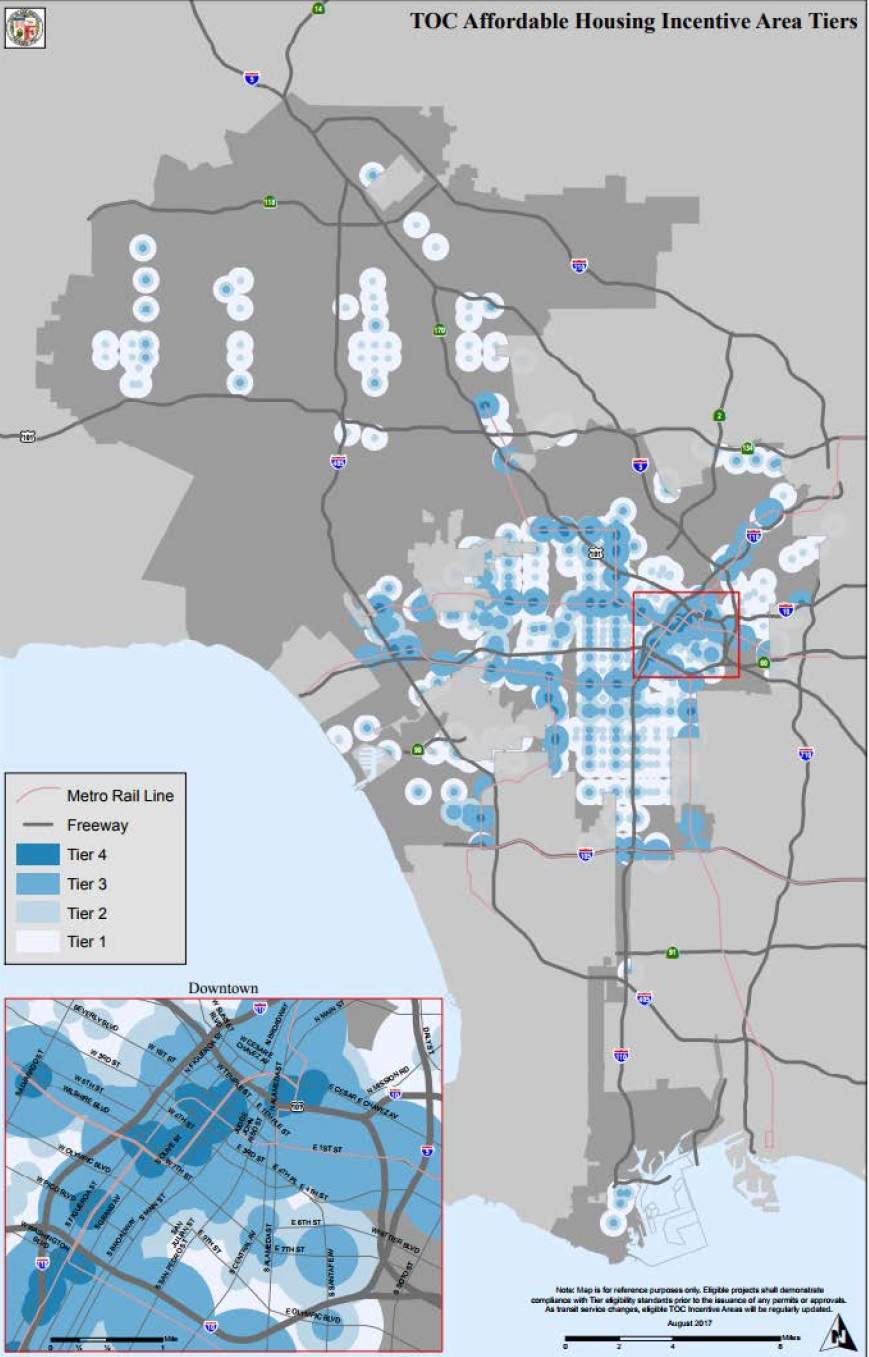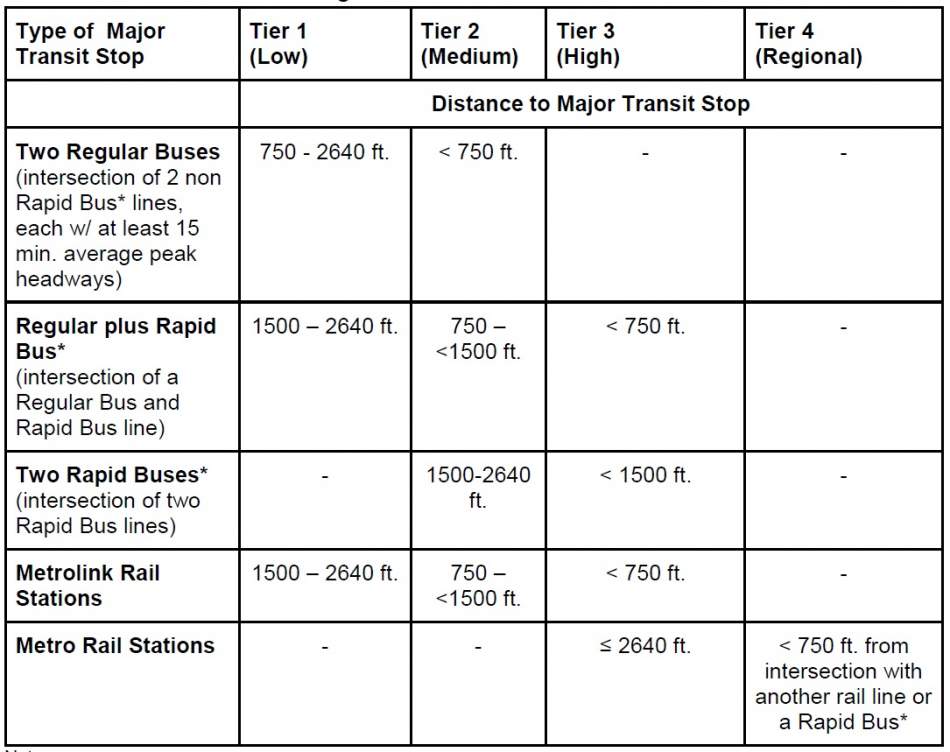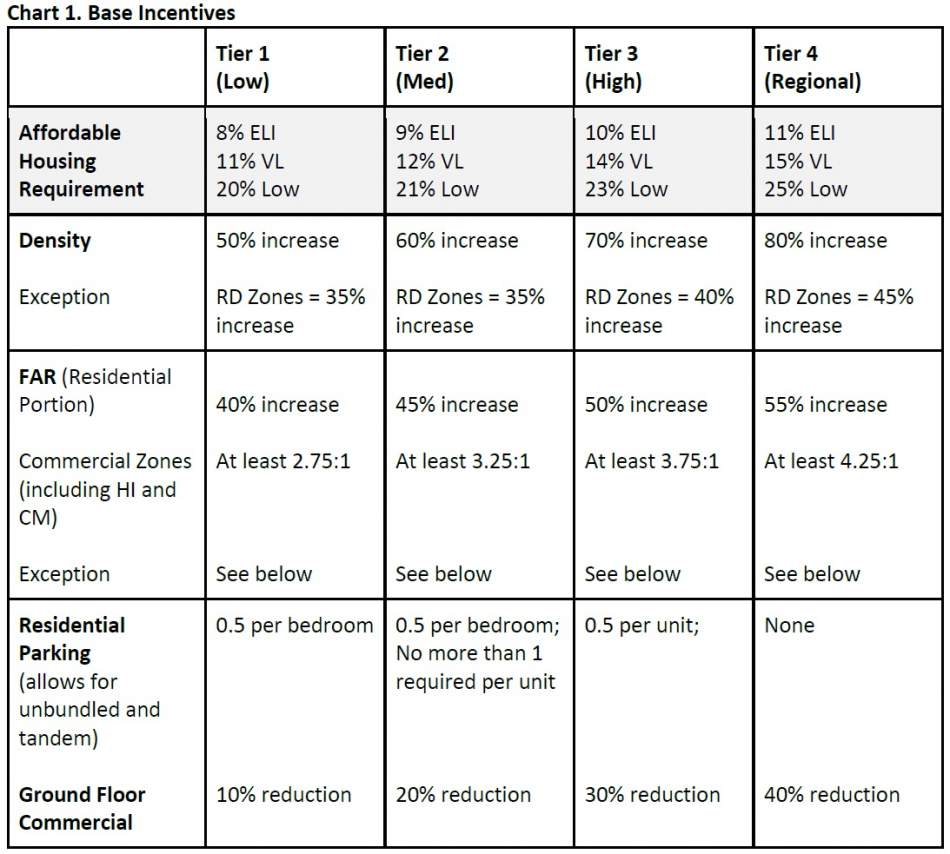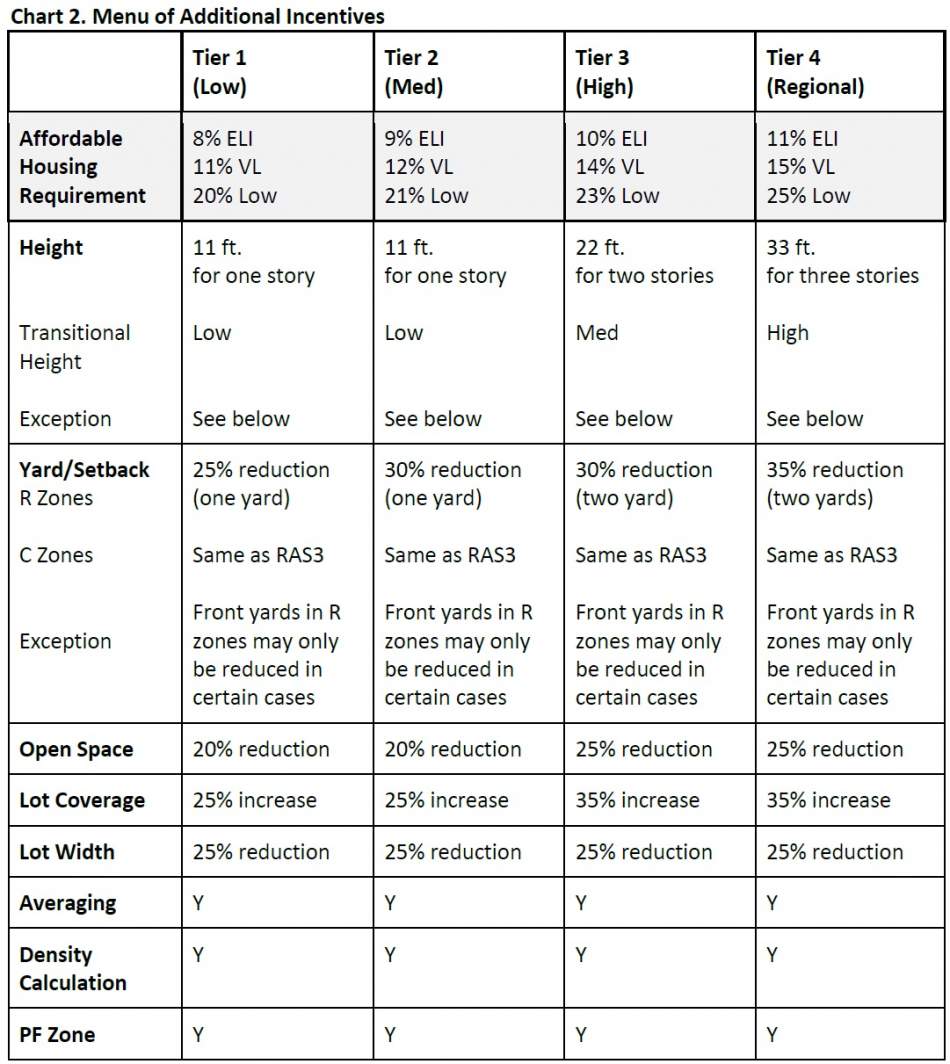After six months of revisions and deliberations, the Los Angeles Department of City Planning has released its official Transit Oriented Communities guidelines. The program, intended to incentivize the production of subsidized affordable housing, came about due to the passage of Build Better L.A. - or Measure JJJ - in 2016.
While functionally the same as the draft guidelines presented in March 2017, the Planning Department has made several revisions to the type and degree of incentives offered.
TOC Affordable Housing Incentive Areas
As with draft guidelines, the TOC Affordable Housing Incentive areas are defined as being the one-half mile radius surrounding major transit stops.
However, the final guidelines provide additional details on the types of major transit stops, with differentiation between local and limited-stop "rapid" bus service. This is particularly relevant to the four tiers of the TOC areas, which provide different levels of incentives to developers that also create affordable housing.
Eligibility
Projects eligible for TOC incentives must do the following:
1. Provide on-site restricted affordable housing at a minimum of the rates below:
- Tier 1 - 8% of the total number of dwelling units at the Extremely Low Income (ELI) level, 11% at the Very Low Income (ELI) level or 20% at the Lower Income level.
- Tier 2 - 9% ELI, 13% VL, 23% Lower
- Tier 3 - 10% ELI, 14% VL or 25% Lower
- Tier 4 - 11% ELI, 15% VL or 27% Lower
2. Be located within a half-mile of a major transit stop, as defined above.
3. Replace existing housing with the same unit types and affordability levels, to be verified by the Department of Housing and Community Investment.
4. Must not seek any other density or development bonus, including those through General Plan Amendments and Zone Changes.
Projects located on multiple lots can request TOC Incentives that correspond to the lot with the highest tier, as specified above. Likewise, developers can request a lower tier by providing on-site affordable housing at the level required by that tier, then use the incentives available for that tier.
Fully affordable housing projects also eligible for an increase of one tier, which is to say that a property located in Tier II could receive the incentives of Tier III.
Base Incentives
Key differences here can be seen in the amount of bonus floor area provided, as well as in parking requirements.
While the maximum percentage increase in the number of buildable units remains the same in the final guideline, the potential increase in floor area for each tier has been increased by five percent.
Parking requirements have also been reduced from those spelled out in the draft document, which required a maximum of one space per unit in Tier III and .5 spaces per unit in Tier IV. Under the final guidelines, a maximum one space per unit would be required in Tier II and .5 spaces per unit in Tier III. In Tier IV - within 750 feet of a rail or rapid bus station - no parking would be required for TOC projects.
Additional Incentives
Projects that meet more stringent requirements, including prevailing wage labor, are eligible for further incentives. The menu of additional incentives can be seen in the chart below:










